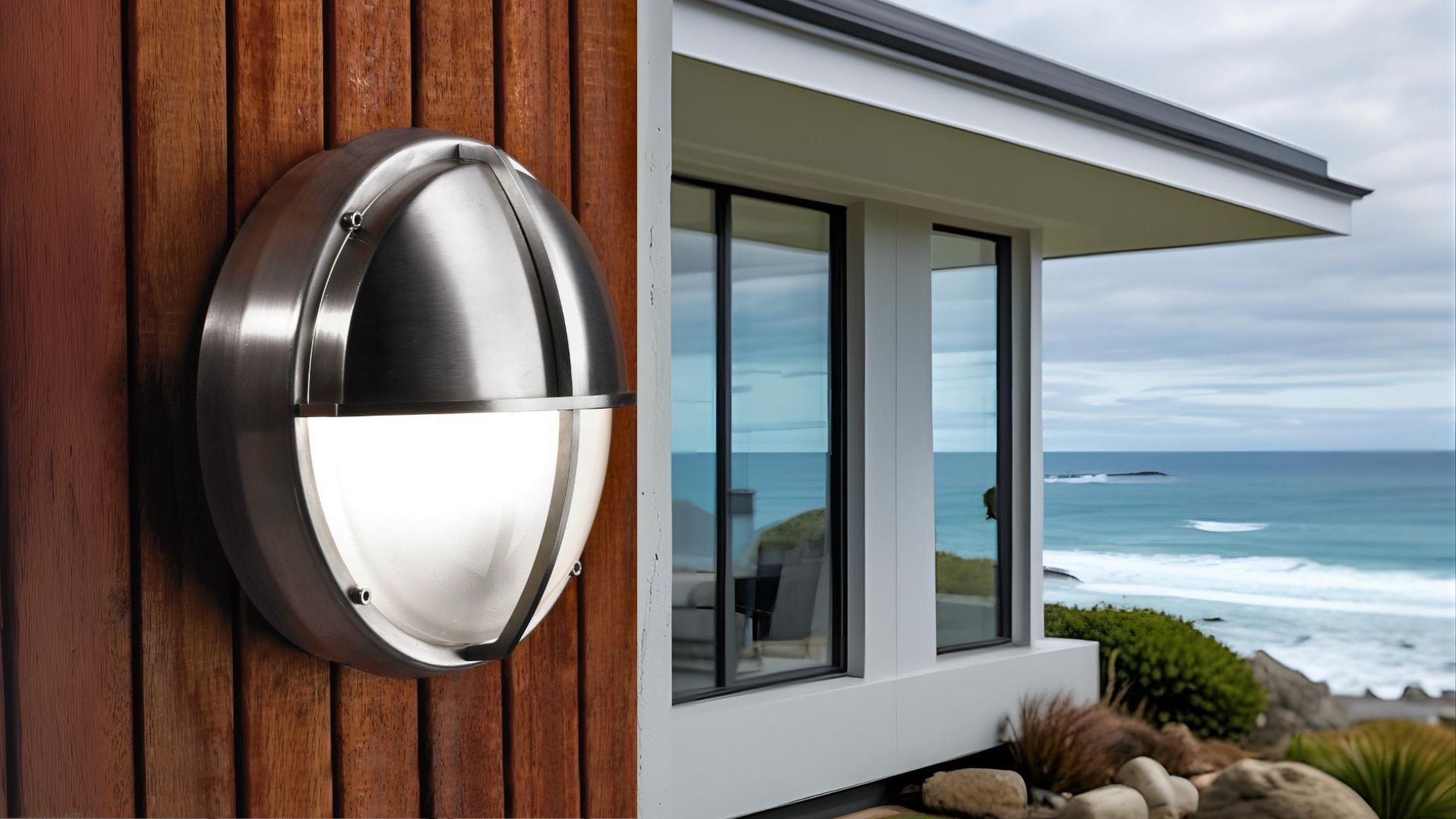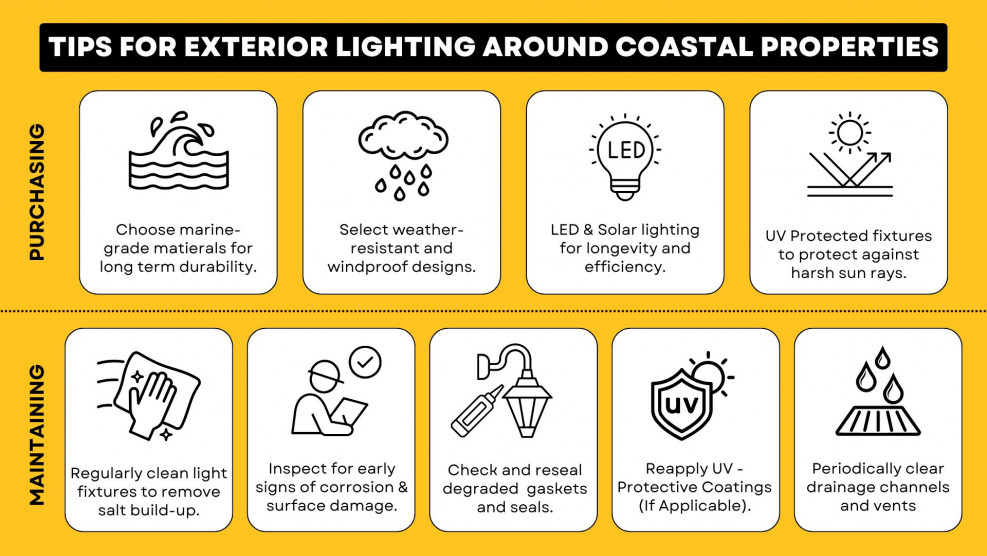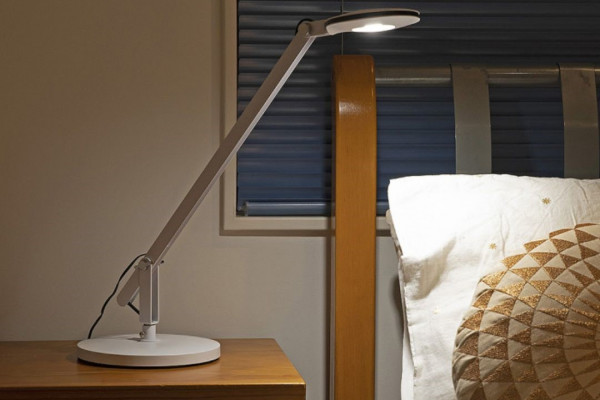Best Exterior Lighting Options for Coastal NZ Properties

Best Exterior Lighting Options for NZ Coastal Locations
In New Zealand we are fortunate to have an abundance of coastline allowing us to enjoy stunning views and fresh sea air, however it also comes with a unique set of challenges for exterior lighting. Winds can bring in salty sea air up to 10 kilometres inland, thus a vast area of NZ is subject to it's affects. The combination of saltwater, strong winds, and UV exposure can wreak havoc on outdoor fixtures, causing premature wear and tear. To ensure lighting lasts and continues to perform well, it's essential to select fixtures designed to withstand these conditions and maintain them well.
A Guide to the Best Exterior Lighting Options for Coastal Areas
1. Choose High Quality Marine-Grade Materials

Coastal environments can be harsh on outdoor lighting, so choosing the right materials is crucial. 316 grade stainless steel or corrosion-resistant aluminium is a must for fixtures exposed to salt air and moisture - Or select lights made with lower maintenance UV stabilised plastic materials. These materials are designed to handle the harshness of the coastal climate without deteriorating quickly. High quality plating and painting finishes can also provide an extra layer of protection, preventing rust and oxidation.
Fixtures with a higher IP rating (Ingress Protection) — ideally IP65 or higher — are also essential. This means they are sealed against both dust and water, keeping saltwater out and protecting internal components from corrosion.
2. Weather-Resistant and Windproof Designs

Coastal areas in NZ often experience strong winds and rain. It’s important to choose windproof and weather-resistant lighting fixtures to avoid them getting damaged in a storm. For example, IP66 or IP67 rated fixtures are built to withstand not only heavy rain but also dust and debris blown by the wind.
Light fittings that feature heavy-duty seals and gaskets are great for withstanding the battering winds that can be common on the coast.
3. LED Lighting for Efficiency and Longevity

LED lights are a great option for coastal homes due to their energy efficiency, longevity, and resilience. LED's have a much longer lifespan than traditional halogen or incandescent lights, therefore the time between maintenance cycles will extend. Additionally, LED lights emit less heat, making them less likely to succumb to the elements.
4. UV-Protected Fixtures for Sun Protection

Another factor to consider when choosing outdoor lighting for coastal areas is UV exposure. The sun can quickly degrade plastic and paint finishes, leading to discolouration and brittleness. Look for products with UV-protected plastics and paints. Glass lenses are naturally rust proof or choose products with lenses made from UV stabilised plastic. Choosing materials which are resistant to sun damage will ensure your lights remain functional and visually appealing for years.
Find out more about the different materials and finishes for outdoor lights here.
Top Tips For Maintaining Coastal Lighting
Whether you've just installed brand new lighting fixtures around a coastal property, or just want to ensure the longevity of already installed coastal lighting... the long term maintenance is the key! Little and often is a solid philosophy when it comes to maintaining lights effected by harsh weather and salty air. Small acts of up keep on a 3 monthly to yearly basis can not only prolong the life of the outdoor lights, but save on costly repairs or replacements down the track.
1. Regular cleaning to remove salt build-up

Salt deposits from sea spray can corrode fixtures, especially those made from metal or those that sit sheltered / under eaves and remain unwashed by rain. Clean all exterior light fittings every 3–6 months. The closer to the sea, the more frequently they will need to be cleaned. Use: A soft cloth or sponge, warm water with mild soap, a rinse with fresh water and a dry cloth to remove moisture.
Note: Avoid abrasive cleaners or scouring pads that can damage protective coatings. Keep it simple!
2. Inspect for Corrosion and Surface Damage

Look for early signs of corrosion, bubbling paint, or pitting on metal surfaces. Touch up powder-coated areas with a marine-grade touch-up paint to prevent further deterioration. Replace any components that show excessive rust or wear.
3. Check and Reseal Gaskets and Seals

Over time, rubber gaskets and seals can degrade, allowing moisture or salt in. Check seals around bulbs and housings, and replace any that have cracked, shrunk, or gone brittle. Applying a light coating of silicone lubricant can help maintain the flexibility and effectiveness of gaskets.
4. Reapply UV-Protective Coatings

For plastic or polycarbonate fixtures, consider applying a UV-protective spray every year to preserve the finish and prevent yellowing or brittleness. Make sure any product used is safe for outdoor use and won’t affect light output. For metal and painted surfaces, a car wax or metal polish can be used to protect and rejuvenate the luminaires surfaces. This can also extend time required between maintenance cycles.
5. Clear Drainage Channels and Vents

Some fixtures include small drainage holes or vents to prevent water accumulation. These can easily become clogged with debris or salt. Periodically check and clear them to ensure proper drainage and airflow.

In Summary
When it comes to coastal properties in New Zealand, the right exterior lighting can make a significant difference in terms of both aesthetics and longevity. By investing in the right high quality materials, high IP-rated fixtures, windproof designs, and UV-resistant finishes, lighting will not only withstand the harsh elements but will continue to enhance the property for years to come.
